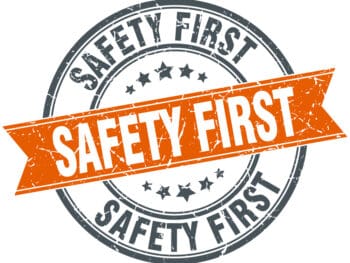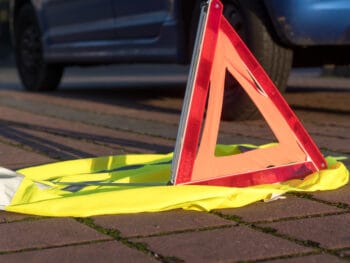While we can tell our readers the importance of fighting fraudulent claims, and publish lists of red flag indicators of fraud, it is often difficult for the risk manager or workers’ compensation coordinator to separate the legitimate work comp claims from the bogus claims.
To assist you in recognizing the bogus claims, we are providing a sample claim, using the actual facts of a submitted workers’ compensation claim to see if you can recognize or spot ten red flags of a bogus claim (the name of the employee has been altered to protect the guilty).
The Claim:
John Doe works in an auto repair shop as a mechanic. Upon arriving early for work on Monday morning, Mr. Doe went into the auto parts store room to get a part for the car he was going to work on. While leaving the storeroom and using both hands to carry the heavy auto part in a box, he tripped over another box on the floor. In an effort to keep from falling, he grabbed a storage shelf, twisting and injuring his shoulder as he fell to the floor. No one saw him fall in the parts storage room as the other employees were just arriving for work.
Mr. Doe immediately reported the claim to the shop manager and explained to the manager how he fell over the box on the floor he did not see because of the box he was carrying with both hands. The shop manager offered to take Mr. Doe to the nearest industrial medicine clinic, but Mr. Doe instead chose to take himself to his “family doctor”. The family doctor took Mr. Doe off work and did not indicate when he would be able to return to work.
When the shop manager called Mr. Doe the next morning to see how he was doing, Mr. Doe’s wife stated he was sleeping and could be disturbed. The shop manager waited and called Mr. Doe again that afternoon. Per the wife, Mr. Doe had stepped out. The shop manager asked for Mr. Doe’s cell phone number, but instead of providing the phone number, the wife promised to have Mr. Doe call the manager. Mr. Doe almost immediately called the manager back to relay what the family doctor had said. The shop manager recorded the cell phone number of Mr. Doe. When the shop manager called Mr. Doe’s cell phone the following week to see what the family doctor had to say after the second medical appointment, the background noises did not sound like the noise you would hear in a person’s home.
A second mechanic in the shop after being overworked for three weeks due to the absence of Mr. Doe advised the shop manager that he had heard through a mutual friend that Mr. Doe had injured his shoulder while rock climbing the weekend before the reported injury.
The claim has numerous red flags that could be a tip-off for fraud. They are:
- Monday morning accident. Almost twice as many accidents occur on Monday morning than any other morning of the week. This is due to people claiming non-work related weekend injuries as work related in order to not lose their source of income.
- Arriving early for work. Unless the employee habitually arrives early for work, arrival for work early on the day of the alleged accident is an indicator the employee wanted to “have the accident” before other employees see he is injured.
- Not seeing a hazard he had just saw moments earlier. If boxes on the floor were a common occurrence, the employee would be careful about watching where he was going. If a box on the floor was unusual, the employee would have made a mental note to avoid it.
- The mechanism of injury does not make sense. If the employee was using both hands to carry a heavy box, how did he have a hand free to grab the storage shelf?
- The accident was not witnessed. Bogus injury claims almost always occur where no one else will see the accident happen.
- The selection of a particular doctor over a more qualified doctor who specializes in treating injured employees. This is normally a sign the employee wants a doctor who will accommodate his desire to be off work.
- A doctor who does not address return to work. This is normally because the injured employee tells the doctor that he does not feel he will be able to meet his job requirements.
- The employee being asleep when he would normally be awake. Unless the doctor has prescribed some very strong pain killers, the employee should be available to talk to the employer.
- The employee not being at home. Occasionally not home is understandable, repeatedly not home/not available is usually a sign the employee has something better to do than being at home, i.e., possibly another job, either short-term or long-term. Background noises that don’t sound like a spouse or a television often are an indicator the employee is working elsewhere.
- Tips from co-workers. This is probably the strongest evidence of fraud and should be investigated thoroughly.
None of these red flags by themselves are proof of fraud, nor is a combination of two red flags. However, the more red flags the employer sees on a claim, the higher the probability the claim is fraudulent. If you see multiple reasons to question the validity of a claim, the insurance adjuster and the special investigative unit of the insurer should be notified as to why you believe the claim to be questionable.
Author Michael B. Stack, Principal, COMPClub, Amaxx Work Comp Solutions. He is an expert in employer communication systems and helps employers reduce their workers comp costs by 20% to 50%. He resides in the Boston area and works as a Qualified Loss Management Program provider working with high experience modification factor companies in the Massachusetts State Risk Pool. He is co-author of the #1 selling book on cost containment, Your Ultimate Guide To Mastering Workers Comp Costs www.reduceyourworkerscomp.com, and Founder of the interactive Workers’ Comp Training platform COMPClub. Contact: [email protected].
©2015 Amaxx LLC. All rights reserved under International Copyright Law.
SALES TO PAY FOR ACCIDENTS CALCULATOR: http://reduceyourworkerscomp.com/sales-to-pay-for-accidents-calculator/
WC GROUP: http://www.linkedin.com/groups?homeNewMember=&gid=1922050/
WORKERS’ COMP TRAINING: https://workerscompclub.com
Do not use this information without independent verification. All state laws vary. You should consult with your insurance broker, attorney, or qualified professional.










